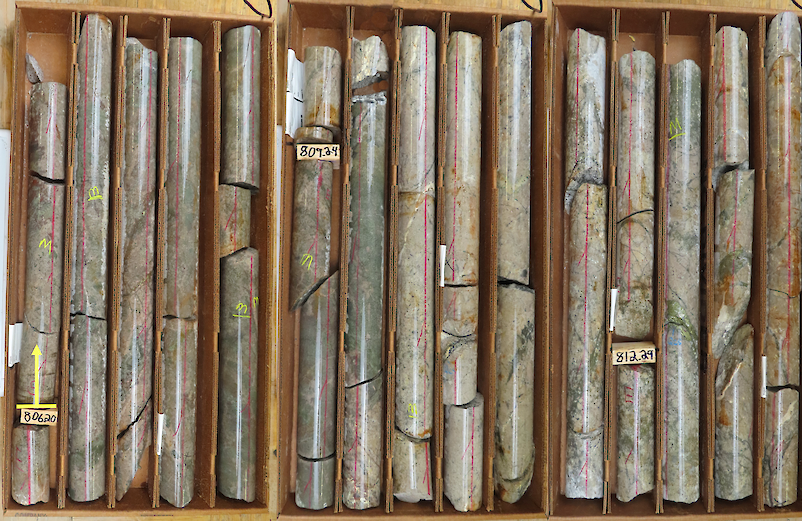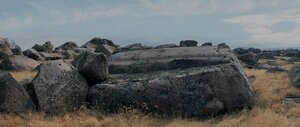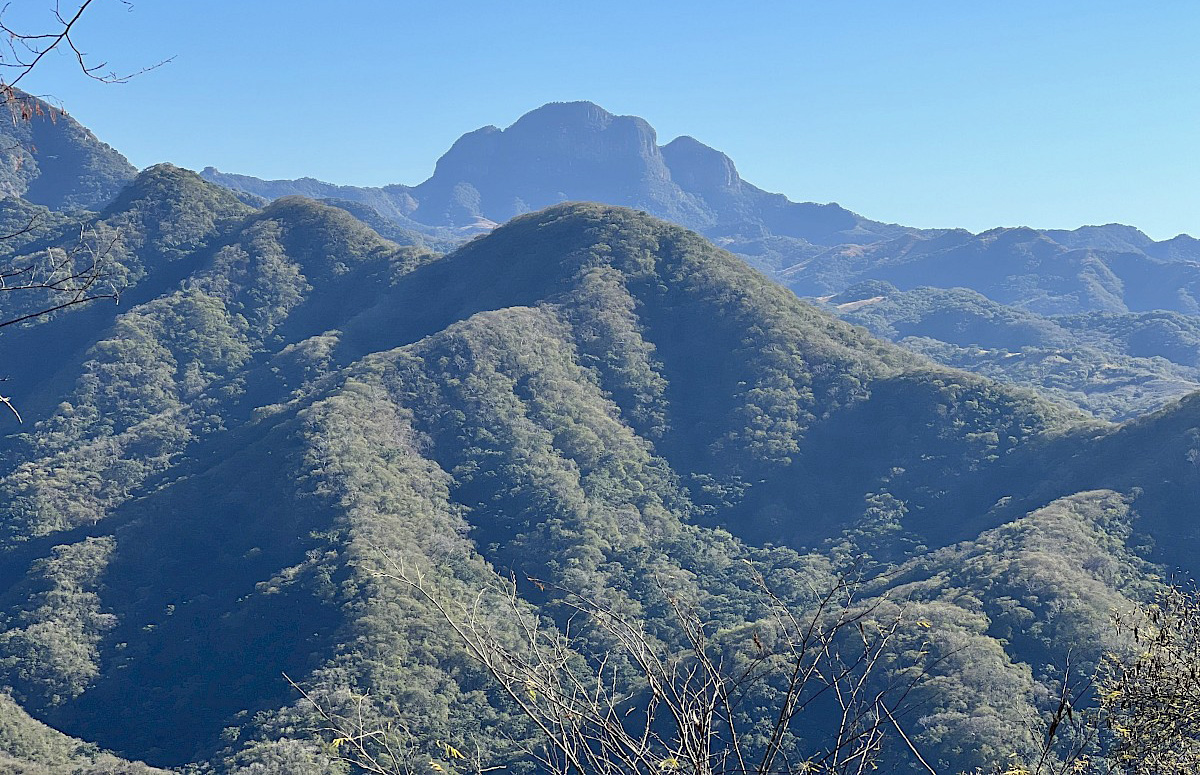The Gold Report: When you spoke with us last year, you talked about Europe's financial problems being a policy issue. Are they any closer to a solution to the debt crisis there and is the situation in the U.S. parallel to that?
Vikas Ranjan: I think there's been progress made toward solving the debt crisis in Europe and also in the U.S., which is a different ball game. When I said Europe is more like a policy problem, I meant that it's not a problem that just came up one fine day. A monetary union without any proper fiscal union creates a situation where weaker countries can hide under a stronger currency and run big deficits, and at the same time don't have the flexibility of using cheaper currency when they get into trouble. That has been the case with countries like Greece, Italy, Portugal and Ireland.
"I believe gold has a good upward trend, especially due to QE3."
Now there's a realization in Europe that if they want to save the euro, they also have to have some sort of fiscal union with a sovereign type of debt facility, which they are working toward. Even countries like Greece have done better than what some people expected and are trying to resolve the crisis. The European Central Bank (ECB) has clearly stated that it would do whatever is required to keep the euro in place. The market is giving some credence to that, with bond yields on stronger countries such as Germany creeping up, whereas weaker countries are seeing a fall in those yields. We are probably moving toward some sort of solution, which is going to take some time.
Since the U.S. election is over, we will see more systematic talk about reducing the deficit and the debt. We may see some differences in approaches, and some give-and-take, but ultimately a solution will have to be found.
TGR: You were relatively optimistic last year about the gold price finally going through $2,000/ounce (oz), probably this year. What's your forecast for gold going into the coming year?
VR: I remain optimistic about the price of gold, at least for the next two to three years. I believe gold has a good upward trend, especially due to Quantitative Easing 3. Now the ECB is following what the Federal Reserve Bank has been doing for the past three or four years, an easy money policy. The next target for gold prices is that $2,000/oz barrier. I would not bet on that happening this year, but early next year, yes.
When economies start to recover, people begin to think about inflation coming into play. Gold has traditionally done well when inflation is expected. It does well in the short term because of economic uncertainty and currency debasement, and also when there are inflationary expectations. I would be a buyer of gold and gold-related securities at these prices, and the trend is good.
TGR: You were also quite positive for the prospects of the junior mining shares when we last spoke. Even with higher gold prices, a lot of them have not been doing all that well. Is there going to be a point when people finally jump in and take them higher?
VR: There has been some decoupling between gold and the share prices of both junior and senior mining companies. The juniors have a harder road to climb. While we may see another situation like 2010, when everything went up, I do feel there will be a flight to quality, especially among junior companies. The emphasis is on companies that have a definitive plan for what they expect to achieve in the next two years or so, and a definitive exit strategy.
"Gold does well in the short term because of economic uncertainty and currency debasement, and also when there are inflationary expectations."
That short-term goal will be to create something that will be appealing to somebody else. If you're a junior with an advanced asset that somebody can see being developed into a mine in the next four or five years, you're in a good position. If you have something closer to production, you're in a good position. But, investors have to be choosey in the junior market. Just because the gold price is going up doesn't mean that every junior explorer will go up. Good juniors will see some life coming back to them, and it's happening to some extent already.
TGR: It's been a pretty tough year or two for a lot of junior companies that don't have cash flow or feasibility/prefeasibility studies and the ability to finance operations. There have been some casualties along the way. Do you think the higher gold prices are going to be able to rescue some of these companies, or are some just not going to make it?
VR: There will be companies that are not going to make it. Higher gold prices will not salvage every company out there. A good one-third to one-half of junior companies with sub-$50 million (M) market caps will have to consolidate or do something creative to get to a stage where they will be appealing, or they will go out of business. There is not enough money for exploration plays for every company out there.
TGR: There do seem to be a lot of small companies with promising properties, but the cost of continuing exploration and overhead is going to make it tough for some of them to survive. Do you expect some merger and acquisition (M&A) action or joint ventures (JV) on some of these smaller projects, or are companies going to abandon properties and move on?
VR: I would say both. We will see a lot more M&A and JV-type actions happening. I personally feel that JVs are a very good route for companies that have good projects but lack the capital to advance them. Instead of losing the entire project, they could still keep 40–60% and find a funding partner. We will see a lot more of that happening, at least with companies that have good assets.
M&A would also happen on that front, but more so with junior companies that have advanced projects closer to feasibility in places where people can see production happening. A great project in a geographical location that is very hard to reach and will take five years to develop, forget about that, no matter how good the project
TGR: So, let's talk a little about your Ubika 50 Index. How's that done over the past year and what have been some of the better performers in your index?
VR: Well, it has been a bit difficult the past year, and not surprisingly because companies in our index are mostly juniors. Many of those are very early stage exploration companies, so they have been battered. There have been some names that have done well, even in this market, but overall the index has underperformed gold prices. That's not surprising, because most of the gold shares have underperformed gold, as an asset class.
Still, we have managed to outperform the TSX Venture Index by a big margin. Since inception, our index is up about 41–42% in the last two years, whereas the Venture is down 13%, while gold is up 55%. So, we were outperforming gold until recently, but of late we haven't. There are several companies that have done very well, such as Kaminak Gold Corp. (KAM:TSX.V), which is a Yukon play. So have Northern Gold Mining Inc. (NGM:TSX.V), which is an Ontario play, and Belo Sun Mining Corp. (BSX:TSX.V), which is in Brazil. Now we also have several companies under more detailed research coverage that we can talk about, as well.
TGR: Tell us about some you like now.
VR: At the top of the list is Rye Patch Gold Corp. (RPM:TSX.V; RPMGF:OTCQX), a Nevada junior. It has been in the news frequently over a legal case that is going on with Coeur d'Alene Mines Corp. (CDM:TSX; CDE:NYSE) and a subsidiary, over the Rochester claims. Coeur failed to pay its annual fees for these claims on time and the land became open for staking, which Rye Patch did. Now Coeur is claiming that it went back and overstaked those and that it was just an oversight and it still has legal right to them, which Rye Patch is obviously disputing. If Rye Patch wins this case, we believe that it will have access to huge resource and reserves on those claims. But, that's just one piece of opportunity for Rye Patch.
Rye Patch has several other opportunities, including a big land package on the Cortez Trend in Nevada. It has a 100%-owned project called Garden Gate Pass on Cortez and also a big land package and joint venture with Barrick Gold Corp. (ABX:TSX; ABX:NYSE) and McEwen Mining Inc. (MUX:NYSE; MUX:TSX) called the Patty project that it's exploring as well. It has more advanced projects on the Oreana Trend called Wilco and Lincoln Hill with total resources of close to 3.2 million ounces (Moz) in the NI 43-101 category. Most of that is in the Measured and Indicated category, defined mainly in two open pits on Wilco and one on Lincoln Hill. Defined resources within a constrained pit are very significant for a junior company. We really like that play and think it's undervalued. If the legal case goes in its favor, that will be a significant catalyst for the stock and a bonus to everything else it has going for it.
TGR: Where is the stock now and where are you expecting that might go?
VR: Rye Patch is trading in the $0.45–0.50/share range. Our model price is close to $1.50/share. Depending upon drill results, Cortez and the legal case, the opportunity to go back up to its high level of $0.85–0.90/share is not that farfetched. The stock could double in the next couple of quarters if those things work out.
TGR: The legal case still shouldn't have that big an impact on the overall long-term valuation.
VR: Our valuation is actually based on the other projects. We think that this is a stock that should be north of a dollar in price. You're right that regardless of the legal case's outcome, I think it's undervalued.
TGR: What else are you looking at now?
VR: We have a very interesting company called Highvista Gold Corp. (HVV:TSX.V) under coverage with a big land package in the Sonoran Gold Belt in Mexico. The management team, especially its CEO, Rick Adams, put into production two mines before and he's trying to do the same here. It has one target, called Chanate North that is in close proximity to AuRico Gold Inc.'s (AUQ: TSX; AUQ: NYSE) Chanate mine. Highvista believes that the mineralization from that Chanate structure goes onto its project.
"You have to go for quality and to look for companies that have a great defined plan in the next two years."
Highvista also has a target called Republicana, where it had some very good success drilling this summer. That's a very simple and potentially heap-leachable resource, right at the surface. If it can develop 0.5–1 Moz in resources and can show decent metallurgical results, it should become a very desirable takeover target. Everyone with a near-surface heap-leachable resource of around 1 Moz has been taken out, including Grayd Resources in that area. We see Highvista as a good takeover play in the next couple of years, as it builds its project.
TGR: There's certainly a lot of action in Mexico these days. What about some of the other ones that you think are interesting?
VR: We have a company called West Red Lake Gold Mines Inc. (RLG:CSNX), which is a Red Lake play in Ontario. It has a 60/40 joint venture with Goldcorp Inc. (G:TSX; GG:NYSE) on one of its flagship projects called Rowan. We expect it to list on the Toronto Venture Exchange in the coming year. It has really big potential for defining an open-pittable gold resource north of 2 Moz. Not many companies can claim to have a fully owned JV partnership where Goldcorp pays for 40% of the exploration costs, with Red Lake in its backyard.
With $4–5M in drilling in the next year or so, it could define a pretty powerful resource that will be very attractive to someone like Goldcorp or an upcoming producer like Rubicon Minerals Corp. (RBY:NYSE.MKT; RMX:TSX). Red Lake has had many success stories, including Gold Eagle Mines, which was snapped by Goldcorp in 2007 for $1.2 billion when it didn't even have an NI 43-101 defined resource and was based only on the potential. West Red Lake has properties in the same area where Gold Eagle originated. It's a very interesting but not well-known story, so the valuation does not reflect the true potential.
TGR: What else do you like in other areas?
VR: We're also covering a West African story in Ghana called Abzu Gold Ltd. (ABS:TSX.V; ABZUF:OTCQX), which has a joint venture with Kinross Gold Corp. (K:TSX; KGC:NYSE) on its open-pit potential Nangodi project. Ghana is probably the best place for gold mining in Africa, at least in my opinion. Abzu has several projects there, but this is the focus. Its management did a smart thing, which many juniors should take a lesson from. It obtained a $2.5M strategic investment from a company called Stonehouse Construction, a mining equipment and operations company that builds mines. Stonehouse has taken the responsibility to build the open pit and become the operator. If Abzu can define a target resource in the range of 0.75–1 Moz, that is good enough for Stonehouse to then define the pit and, we believe, even provide the off-balance sheet financing for construction.
The stock was as high as $0.80/share in the last 12–14-months. Now it's at $0.09/share. This is an example of people ignoring good assets in a bad market. Abzu has a clear focus to advance the project. As it takes the story back to the Street to show the drill results and the plan to get to production with Stonehouse's help within two years, I think it will resonate well in the market.
TGR: Any other ones you want to talk about?
VR: Victory Gold Mines Inc. (VGO:CNSX) has a near-term opportunity in developing a past-producing mine in Timmins, Ontario. Its project is surrounded by three producers, Brigus Gold Corp. (BRD:NYSE.MKT; BRD:TSX), St Andrew Goldfields Ltd. (SAS:TSX) and Lake Shore Gold Corp. (LSG:TSX). The Gold Pike mine is a past open pit that produced about 100,000 tonnes at 3.4 grams per tonne (g/t). It has been drilling the last 12–18 months to extend the open pit. We believe that it has internally defined an initial pit resource to 150 meters (m) depth. The original pit only produced to 22m.
It can probably define 150,000–200,000 oz (150–200 Koz) in that open pit. The next phase is to go about 300m. It can open-pit mine as deep as 200m for sure, and if it wants to go deeper, it can use a ramp down to 500m. The plan is to produce ore that could become the feed for nearby operating mills. That would also make it an attractive target to be acquired by one of these companies. So, here is an example of a company with a very clear goal and timeline in mind, that doesn't take a lot of money to reach. I think that its management will create a lot of value for the shareholders.
TGR: It just intends to be a mining company and not build a mill to process the ore?
VR: The real goal is to get attention. For example, St Andrew's mill will run out of ore in three years and would need feed. Victory is only about 3 kilometers from that mill and would be a perfect source of feed. Lake Shore is developing an open-pit mine that will be in production in 2014. The ore from that open pit is expected to be lower grade, averaging less than 2 g/t. Victory's material is averaging above 3 g/t and Lake Shore can potentially use that to sweeten its ore. So, Victory's angle is to be acquired by one or more of the nearby companies.
TGR: What else would you like to mention?
VR: We also have a company called Meadow Bay Gold Corp. (MAY:TSX.V; MAYGF:OTCQX) in our coverage, which is revising an older mine project called the Atlanta gold mine in Nevada. Gold was produced there in the late 1980s and it still has a milling facility and complete infrastructure. Kinross Gold had this project before. When Meadow Bay acquired the project, it wanted to get to a resource in the main Atlanta zone of about 1 Moz. Kinross' internal estimate was roughly 400 Koz at 3.4 g/t.
Early drilling started to find evidence of a porphyry. Suddenly the project scale became much bigger and Meadow Bay wanted to chase that porphyry and it now appears that there may be two porphyry systems. It also decided to consolidate its land position and now has a larger land package. It's now focusing more on the porphyry and just announced that drilling has commenced there to develop a resource estimate on the main zone. While financing has been a challenge, as with every junior, Meadow Bay has good people involved and this is another project to really keep an eye on.
One more story that we are following is called Eagle Hill Exploration Corp. (EAG:TSX.V). The company has a very interesting project in Québec called the Windfall Lake project, which it initially acquired from Noront Resources and where it's finding really high-grade material. In the last four or five years Eagle Hill has managed to get a resource of 1.5 Moz in the Indicated and Inferred category. The grades are really high, around 10 g/t gold, with 538 Koz in the Indicated category and 800 Koz at 8.7 g/t in the Inferred category, with continued expansion of the mineralized zone. The near-surface mineralization makes the project more interesting because it can be open-pitted before going underground.
Québec is probably one of the best mining jurisdictions in the world. I have been on the site. It has a great mining camp with an underground ramp that Noront spent $20M building. Eagle Hill is expecting to do a feasibility study in the first half of 2013. Noront does have a back-in right on that project and we believe there are negotiations to resolve terms that makes sense to both parties.
Now the share price has not done that well lately, probably due to share dilution from capital raises. But as far as projects go, it's probably one of the best for the quality and grade. Projects with high grade have attracted a significant acquisition premium because they have a better margin of error if the costs go up. That's something that makes Eagle Hill very interesting.
TGR: Where's it selling now and where do you expect it might go?
VR: It's selling about $0.13/share right now. We think it should be north of $0.50/share, based on its scope and potential. But if it can get to the prefeasibility stage and really show the project potential in terms of net present value, then that may change.
TGR: What are you suggesting our readers do to make some decent profits or recover some of their losses in the coming year?
VR: Nobody has a crystal ball, but I would say readers would do well by being focused. Precious metals are a good place to be in the next year, especially gold. I think you have to be choosey. You have to go for quality and to look for companies that have a great defined plan in the next two years, and a path to achieving that plan by spending a reasonable amount of capital. If they can show those catalysts, then I think there is a good possibility that stock will do well.
If investors have stocks in their portfolios that do not fit those criteria, I would say that taking a loss and getting out of those is probably going to save some money, which can be redeployed into better quality names. I think markets will move higher in the new year, regardless of what has happened in the U.S. elections. It always happens when you have an easy money policy, which should continue for the near term. So, I would be more optimistic about the market's prospect, especially for precious metals juniors in the next year.
TGR: Thank you for that optimism and for joining us today, Vikas.
VR: Thank you very much.
Vikas Ranjan, a co-founder and principal of Ubika Research, has over 18 years of experience in investment management, finance, customer analytics and research. He is also a co-founder and principal of Gravitas Capital Corporation, a merchant bank based in Toronto. His experience includes management positions with TAL Global Asset Management and Bank of Montreal. He holds a Bachelor of Art degree in economics and a Master of Management Studies from University of Mumbai and an MBA in Finance from McGill University. Before founding Ubika Research, Ranjan co-founded P2P Systems Inc., which was acquired by Microforum Inc.
Want to read more exclusive Gold Report interviews like this? Sign up for our free e-newsletter, and you'll learn when new articles have been published. To see a list of recent interviews with industry analysts and commentators, visit our Exclusive Interviews page.
DISCLOSURE:
1) Zig Lambo of The Gold Report conducted this interview. He personally, and/or his family, own shares of the following companies mentioned in this interview: None.
2) The following companies mentioned in the interview are sponsors of The Gold Report: Rye Patch Gold Corp., Highvista Gold Corp., Goldcorp Inc., Rubicon Minerals Corp., Brigus Gold Corp. and St Andrew Goldfields Ltd. Streetwise Reports does not accept stock in exchange for services. Interviews are edited for clarity.
3) Vikas Ranjan: I personally and/or my family own shares of the following companies mentioned in this interview: Victory Gold Mines Inc., West Red Lake Gold Mines Inc. I personally and/or my family am paid by the following companies mentioned in this interview: None. I was not paid by Streetwise Reports for participating in this interview. Ubika Corp, the parent company of Ubika Research, holds positions in West Red Lake Gold Mines Inc., Victory Gold Mines Inc. and Abzu Gold Ltd. and holds options in Highvista Gold Corp., Rye Patch Gold Corp. West Red Lake Gold Mines Inc. and Victory Gold Mines Inc. Ubika Corp, the parent company of Ubika Research, has received fees from companies mentioned in this report for capital market exposure and advisory services.




































